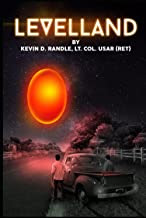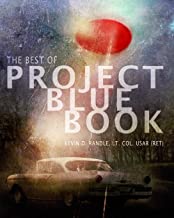UFOs: Myths, Conspiracies, and Realities by John B. Alexander. New York: Thomas Dunne Books, St.
Martin’s Press, 2011, 305 pp. $25.99 (hardback). ISBN 978–0–312–64834–3
It
is said that the truest test of a man’s intelligence is how much he agrees with
you, and I find that Dr. Alexander and I share a great number of opinions. I
looked first at the chapter about Philip Corso, who claimed an inside knowledge
of the Roswell UFO crash and the government plans to exploit the find by
seeding recovered material into American industry. Here Alexander writes not
only from his experience in the Pentagon and classified operations, but as a
friend of Corso. He spoke with him in the weeks prior to Corso’s death. But
Alexander found many holes in the stories spun by Corso and in the end, while
acknowledging Corso’s long military career, did not truly believe him. Here
Alexander and I agree.
 |
| John Alexander |
What
was more fascinating was Alexander’s discussion of Congressional hearings about
UFOs, and what disclosure would accomplish. Writing as an insider who has
experience in this arena, Alexander suggested that neither hearings nor
disclosure were going to happen for many reasons he carefully laid out.
One
of those reasons was what almost any of us have observed ourselves. UFOs are a
third rail in politics (though Alexander suggests they are tarlike), meaning
that almost any expression of belief is the same as admitting to a belief in
Easter Bunny. He provided examples of what happened after UFOs were mentioned
in a debate with former presidential candidate Dennis Kucinich. From that point
on, while commenting on Kucinich’s political ideas and theories, pundits found
they had to remark about UFOs, always in a derogatory way. The UFO connection
might have nothing to do with Kucinich’s political statements, but they were
brought in anyway, as a means to discredit him.
Of
Disclosure, the idea that the US government has many classified UFO documents
to release, Alexander noted that there was nothing to actually disclose (an
idea reinforced by a recent White House announcement that the government held
no classified UFO files). The official investigation of UFOs by the Air Force
had been released decades ago and a great number of the files and records from
the now closed Project Blue Book are online, available to everyone.
Alexander
scoffs at the idea of MJ-12, that is, the super-secret committee supposedly
created by President Truman after the Roswell UFO crash. Unlike so many others
who suggest the documents are faked based on analysis of the documents
themselves, Alexander attacks from the way they entered into the public
consciousness. Using Watergate as an example, he notes that the Watergate
investigation was built on solid evidence from sources known to the reporters
while MJ-12 is built on anonymous documents sent to an obscure movie producer.
In leaks of real documents, those documents can be examined, the sources
verified, and the information corroborated. With MJ-12, there are no original documents,
there are no sources, and the information seems to be a hodge-podge of real
data taken from historical sources rewritten to include references to MJ-12.
Here again, Alexander and I agree.
And
we certainly agree with his analysis of the Air Force sponsored University of
Colorado study of UFOs known to many as the Condon Committee. He chides science
for its refusal to look critically at the results of the study, which he
describes as badly flawed. He notes scientists continue to use of the study to prove
that nothing of scientific interest could be learned from a true examination of
UFOs, when the contrary is true. He
suggests that many of the case studies cited by the Condon Committee were
cursory at best and certainly inadequate for a true scientific analysis.
Although he doesn’t mention it, one of the cases in Condon Committee report was
concluded suggesting that it was caused by a phenomenon so rare that it had
never been seen before or since. They don’t bother to identify that phenomenon.
Alexander suggests that scientists actually read the report before relying on
it to prove there is nothing of value in UFO research.
Where
we part company is his analysis on the Roswell UFO crash case. He writes that
he now subscribes to the Project Mogul answer. According to him, “While the Air
Force report, Case Closed, provides conflicting information regarding
classification, most of those involved agree it [Project Mogul] was both Top
Secret and strictly compartmented.”
But
this is simply untrue. While the ultimate purpose, to spy on the Soviet Union,
was classified, the project itself and the equipment used by it were not. For
the launches in June, 1947, the balloons were standard neoprene weather
balloons and the radar targets were foil-covered devices known as rawins. The
name of the project, contrary to what has been said many times by many other
sources, was not classified and appeared in Dr. Albert Crary’s unclassified
diary published in the Air Force study. Announcements of the launches were
required by the CAA (forerunner to the FAA) because the balloon arrays could be
a hazard to aerial navigation. Pictures of the balloon arrays were published in
newspapers around the country on July 10, 1947. So much for a highly classified
project.
What
struck me most about this short segment of the book was how he let the sources
get away from him. In other places, he carefully named those sources and their
credentials. As an example, when writing about an intercept of a UFO by an
American pilot stationed in England, he told us it was Lieutenant Milton
Torres, who eventually earned a doctorate in mechanical engineering, that
Torres taught at the university level, and he was a very credible source who
had been sworn to secrecy about his UFO encounter. We learn all that we need so
that we might verify what Alexander has written if we feel the need to do so.
With
Project Mogul, we are not so blessed. In writing about the strange symbols
reported by Jesse Marcel, Jr. (whose credentials are also carefully laid out
for us by Alexander) Alexander said, “What was learned was that on the
reflecting panels had been placed a specially designed code that could only be
read by the people with access to the key. More important, it was stated that
this code was not alphanumeric as are most that are frequently employed, but
entailed the use of glyphs.”
In
all my discussions with project engineers and others associated with Mogul,
including Charles Moore who claimed he had “launched the Roswell UFO,” this was
never mentioned. The best the Air Force could do was suggest that a flowered
tape from a novelty company had been used to reinforce part of the rawin
targets, but they produced nothing to prove it. If I wanted to verify Alexander’s
new claim, I could not. Alexander did not provide the source for this unique
bit of information.
For
me, this discussion of Roswell was the big disappointment here. While Alexander
chastised others for accepting much of the nonsense published in the UFO field
including those scientists who make statements without bothering to learn the
facts, this seems to be what Alexander has done in the Roswell case. He
accepted the story of glyphs without proper analysis.
That
said, this is a book that needs to be read and understood by all those inside
the UFO community and by everyone who has an interest in these topics. Yes, he
is going to annoy everyone regardless of personal beliefs with his opinions
about UFOs. His insider status, his knowledge of how things work in both the
world of congressional hearings and in the world of the military classification
provides an interesting insight that those pushing for congressional hearings
and full disclosure should read.
For
the most part his use of names, dates, sources and personal experiences lend an
even stronger note of credibility to his work. While he doesn’t use footnotes,
he provides the source material in the text. It is clear that he knows what he
is talking about and that he had, for the most part, the sources and data to
back it up.
Here
is a book about UFOs that is a must read for everyone. And if we disagree about
the Roswell case, well then, we disagree about Roswell.





















3 comments:
OT, I guess.
Hey Kevin -
What the HECK is the Dang Deal with WHO/WHATEVER the author of the 'Ufoiconoclastitis' blog??
seriously, why does the 'RR' entity feel a such compulsion to rag on you?
"With Project Mogul, we are not so blessed. In writing about the strange symbols reported by Jesse Marcel, Jr. (whose credentials are also carefully laid out for us by Alexander) Alexander said, “What was learned was that on the reflecting panels had been placed a specially designed code that could only be read by the people with access to the key. More important, it was stated that this code was not alphanumeric as are most that are frequently employed, but entailed the use of glyphs."
To quote from THE ROSWELL INCIDENT, Marcel Jr did NOT say these glyphs appeared on the reflecting panels. Instead they were on some of the beam remnants. Also where did the idea that these constituted a 'code' come from? Certainly not Marcel Sr or Jr.
So where did Alexander get this story from? Who of the witnesses noticed these glyphs on the reflectors and how do we know it was a secret code?
You are right to pursue this point.
@CF;
"RR" is Rich Reynolds:
~~~~~~~~~~~~~~~~~~~~~~
Reynolds dares to sully Occam! His artless pretense: courage "run from"!
.
"Don't complicate hypothesis without some need" _is_ confidence, but it remains that "When in need," you complicate that thing, you see? "Occam" doesn't rule that out! That's what "Occam's" all about!
.
So, one _refutes_ R's bland pronouncements; one _subsumes_ his trite announcements. He's _betrayed_ our education... warmed himself in its ablation. So, He won't rate a second look. His fire is out, and he can't cook!
~~~~~~~~~~~~~~~~~~~~~~~~
...which concludes the nicest things I can say about the affected Rich Reynolds: pompous slanderer, canted curmudgeon, and unctuous literary drongo... a regrettable man, a "maven" of the malfeasant and malicious mendacious, if you will, not worthy of washing Dr. Randle's feet.
More?
http://alienviewgroup.blogspot.com/2005/11/smoke-and-fire.html
Post a Comment